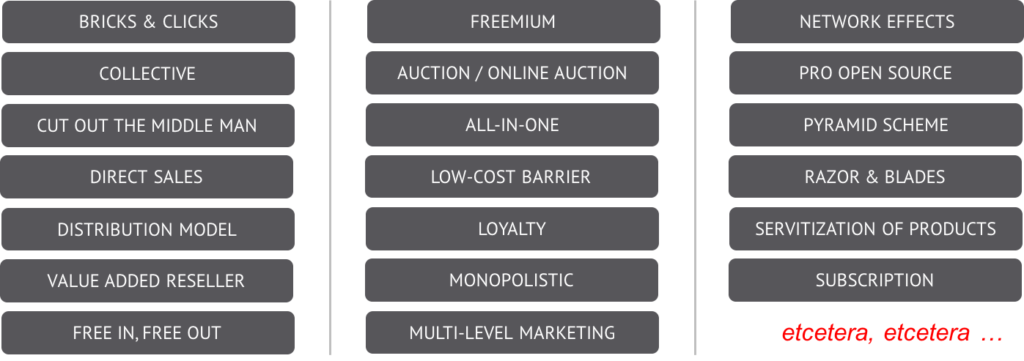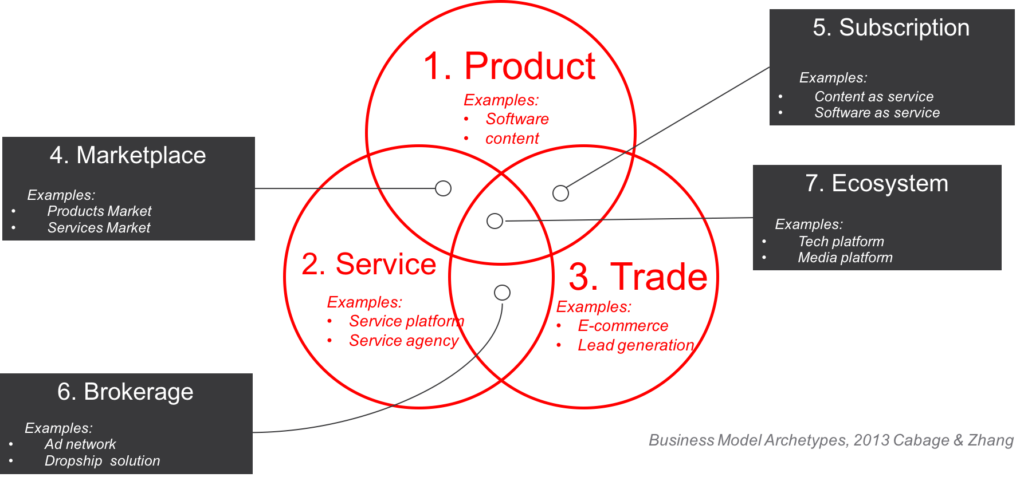7 Business Model Personalities
This article was originally posted on Inc.com.
A well-defined business model should clearly articulate your function in the market, including how you make money, what inputs you depend upon, who your target customers are, and what value you are creating for them. It is a structural representation of how your business functions that concisely articulates what opportunities and challenges you will encounter with this business. If your business were a black box machine, this would be the instruction manual.
Models have become a popular expression of business strategy. Names such as “Network Effects Business” and “Razor and Blades” have come to describe popular models that companies have successfully used to become market leaders in their industries. Unfortunately, the wisdom behind these models tends to be diffuse, without much holistic context that compares one to another. As a result, they are difficult to use and understand, and thus few small businesses and startups take full advantage of them. In our book, The Smarter Startup, my co-author and I took a different approach. We defined a conceptual framework that distills and organizes the fundamental personalities of models and illustrates their relationships from one to the next, a framework we call business model archetypes.

Our model was inspired by work done by the early 20th century psychiatrist Carl Jung, who theorized that there are a few fundamental personality templates from which we all inherit and build our own personalities, which he called personality archetypes. We applied this concept to businesses, observing that there are three primary business personalities: product creators, service provides, and traders, who bring together supply and demand.
Secondary business model archetypes come from combining personality attributes of two of the three primary archetypes, which yields three more types: the brokerage (a company trades as a service), the subscription (a company that turns a service into a product), and the marketplace, which turns the act of trade into a product. Finally, there is a seventh archetype we call the ecosystem, which combines all three primary archetypes.
The seven archetypes are abstractions that describe the fundamental behaviors of business relative to one another. Since they’re abstractions, it may not be immediately evident how to apply them. To this end, we attributed two “prototypes” for each archetype to demonstrate their applicability. A prototype is a more literal demonstration of the abstract archetype that reflects an actual business model you’re likely to observe in real life. For example, you’ll see on the above diagram that e-commerce and lead generation are prototype examples applied to the trade archetype. Both types of companies bring together buyers and sellers, and make money by selling for a premium to cover the cost of their services.
Each of our business model archetypes has strengths and weaknesses, and just about any business you might be considering would give you the option to pivot in at least three different directions as you discover the best opportunities in your market. To demonstrate, let’s say that you were interested in developing software and wanted to build a business around that. You might consider developing a software product, something that you buy and download, such as a premium plugin for a popular CRM or eCommerce platform. You could then pivot to Software as a Service, or SaaS, subscription model, in which you manage and continually improve the software and sell the right to use it on a monthly basis, rather than selling it outright as a product. Or, you could think about creating a software service agency that develops custom e-commerce or CRM solutions for other businesses.
Each of these options would be viable and suitable to a team with a software development background. Which option is best for your business is an important question that depends on the timing and competition of your market, your ability to obtain capital to quickly scale your business, and the competitive advantages you may have going in. The product archetype is perhaps the most scalable and profitable option, and often allows you to sell your service into a specialized marketplace. But it’s also highly commoditizable, so you must be careful to look at timing and competition closely. By contrast, the service archetype is more difficult to scale, but involves a lot less risk and isn’t as vulnerable to market consolidation.
Whichever archetype you settle on, you should consider the options and put yourself through the exercise of considering your competition, your sourcing, and your target customers. Once you have a solid idea of which archetype you want to leverage for your business, you can look at other popular business model frameworks, such as Alexander Osterwalder’s Business Model Canvas, which will walk you through articulating the important dynamics of your business.
However you go about it, the important point is simply to do it–take the time to understand your strategic options and to articulate your business’s foundational strategy. It will give you the clarity you need to understand how to position yourself in the marketplace, and optimize for efficiency and profits.
Image excerpted from The Smarter Startup by Neal Cabage and Sonya Zhang. Copyright © 2013. Used with permission of Pearson Education, Inc. and New Riders
